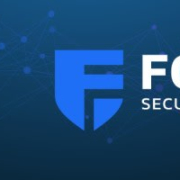

Code42 Incydr and Microsoft Defender for Endpoint are both robust cybersecurity solutions with unique strengths catering to different needs. Based on user reviews, Microsoft Defender for Endpoint has an edge in features and ease of deployment, whereas Code42 Incydr excels in support and pricing.
Features: Code42 Incydr users value its comprehensive data protection, recovery capabilities, and incident response streamlining. Microsoft Defender for Endpoint users appreciate its advanced threat detection, automated investigation features, and extensive security functionalities.
Room for Improvement: Users suggest that Code42 Incydr enhance its integration with other systems, simplify analytics tools, and improve the interface. For Microsoft Defender for Endpoint, improvements could include better compatibility with non-Microsoft environments, reduced complexity, and enhanced user experience.
Ease of Deployment and Customer Service: Code42 Incydr is praised for straightforward deployment and responsive customer support, making it accessible for organizations with limited IT resources. Microsoft Defender for Endpoint, while powerful, can be challenging to deploy and configure.
Pricing and ROI: Code42 Incydr is considered cost-effective with favorable pricing and solid return on investment. Microsoft Defender for Endpoint, despite a higher price point, is valued for its extensive feature set and perceived long-term benefits.
Without detection and protection measures, organizations would face substantial payments and reputational damage, including the necessity to inform customers about data breaches, potentially leading to loss of business.
We have seen a return on investment when using Microsoft Defender for Endpoint, as it saves labor by reducing the need for staff to focus on it.
The biggest return on investment for me when using Microsoft Defender for Endpoint is the time saving.
The level-one support seems disconnected from subject matter experts.
I rate Microsoft support 10 out of 10.
Due to our size, we don't have access to direct technical support, but the knowledge base, Microsoft Learn, and the articles available are really good.
We managed to scale it out in a short amount of time, with two months of planning and three months of implementation on 10,000 computers.
Microsoft Defender for Endpoint is scalable enough to handle various devices across environments, whether they are laptops, Android devices, or operating in hybrid environments.
Compatibility is its main feature.
I haven't seen any outages with Microsoft.
I rate Defender 10 out of 10 for stability.
Defender for Endpoint is extremely stable.
Repeated interactions are necessary due to Level One's lack of tools and knowledge, hindering efficient problem-solving and negatively impacting our experience with Microsoft support.
In contrast, competing products offer reduced pricing for long-term commitments, which makes it difficult for us in that environment.
We use Microsoft partners to help govern the platform, and as part of an alliance, we want to gather data from each tenant and combine them for a complete view.
Given our extensive Microsoft licensing, transitioning to Defender for Endpoint did not affect licensing costs.
It costs $15 per VM for the P2 plan, which is seen as affordable for customers.
The pricing, setup, and licensing were very easy and simple.
Defender for Endpoint's coverage across different platforms in our environment is pretty good. We have devices running Linux, Mac OS, Windows, iOS, and Android. It covers all of them.
Microsoft Defender for Endpoint provides a unified management interface allowing customers to manage their on-premises and hybrid infrastructures from a single pane.
One of the best features of Microsoft Defender for Endpoint is its database for identifying zero-day attacks or malware attacks.
| Product | Market Share (%) |
|---|---|
| Microsoft Defender for Endpoint | 9.9% |
| CrowdStrike Falcon | 7.9% |
| HP Wolf Security | 6.3% |
| Other | 75.9% |
| Product | Market Share (%) |
|---|---|
| Mimecast Incydr | 2.1% |
| Microsoft Purview Data Loss Prevention | 12.6% |
| Forcepoint Data Loss Prevention | 8.5% |
| Other | 76.8% |


| Company Size | Count |
|---|---|
| Small Business | 79 |
| Midsize Enterprise | 34 |
| Large Enterprise | 87 |
| Company Size | Count |
|---|---|
| Small Business | 24 |
| Midsize Enterprise | 24 |
| Large Enterprise | 30 |
Microsoft Defender for Endpoint is a comprehensive security solution that provides advanced threat protection for organizations. It offers real-time protection against various types of cyber threats, including malware, viruses, ransomware, and phishing attacks.
With its powerful machine-learning capabilities, it can detect and block sophisticated attacks before they can cause any harm. The solution also includes endpoint detection and response (EDR) capabilities, allowing organizations to quickly investigate and respond to security incidents. It provides detailed insights into the attack timeline, enabling security teams to understand the scope and impact of an incident.
Microsoft Defender for Endpoint also offers proactive threat hunting, allowing organizations to proactively search for and identify potential threats within their network. It integrates seamlessly with other Microsoft security solutions, such as Microsoft Defender XDR, to provide a unified and holistic security approach. With its centralized management console, organizations can easily deploy, configure, and monitor the security solution across their entire network.
Microsoft Defender for Endpoint is a robust and scalable security solution that helps organizations protect their endpoints and data from evolving cyber threats.
Mimecast Incydr offers a comprehensive data protection and recovery solution, ideal for organizations needing robust insider threat protection and regulatory compliance.
Mimecast Incydr provides a seamless experience across platforms with lightweight clients and centralized administration. It focuses on real-time monitoring, instant access to backups, strong encryption, and customizable risk scoring. This ensures data protection against insider threats while promoting ease of use and low system overhead. Although improvements are possible in areas like Java dependency reduction, GUI design, cloud storage integration, and comprehensive reporting, Mimecast Incydr remains valuable for data classification, legal discovery, and identity management, especially for large environments handling classified information.
What key features does Mimecast Incydr offer?Mimecast Incydr is leveraged across industries for data leakage protection and egress solution integration. It supports HIPAA-compliant backups and peer-to-peer data management, proving invaluable for corporate data protection and traveling employees facing data loss risks. Its application in legal data discovery and disaster recovery planning enhances its relevance for IT administrators and compliance officers managing data-intensive operations.
We monitor all Endpoint Protection Platform (EPP) reviews to prevent fraudulent reviews and keep review quality high. We do not post reviews by company employees or direct competitors. We validate each review for authenticity via cross-reference with LinkedIn, and personal follow-up with the reviewer when necessary.